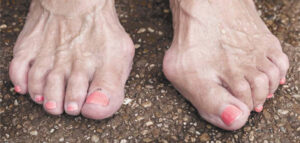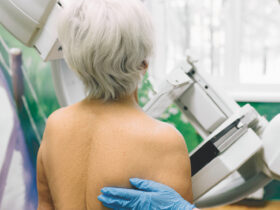Michael J. Petrocelli, D.P.M., F.A.C.F.A.S., C.W.S.P.
Board Certified Ankle and Foot Surgeon and Board Certified Wound Care Specialist
 Hammertoes are a common foot deformity that can cause significant discomfort and affect your daily activities. This progressive condition occurs when there’s an imbalance in the muscles, tendons, or ligaments that normally hold the toe straight, causing one or more toes to bend or curl downward instead of pointing forward. While initially flexible, hammertoes can become rigid and permanent without proper intervention, making early treatment by a qualified board certified podiatrist essential.
Hammertoes are a common foot deformity that can cause significant discomfort and affect your daily activities. This progressive condition occurs when there’s an imbalance in the muscles, tendons, or ligaments that normally hold the toe straight, causing one or more toes to bend or curl downward instead of pointing forward. While initially flexible, hammertoes can become rigid and permanent without proper intervention, making early treatment by a qualified board certified podiatrist essential.
Understanding the Causes
Several factors can contribute to the development of hammertoes. Wearing ill-fitting shoes, particularly those with a tight toe box or high heels, is a leading cause as these shoes force toes into a cramped, bent position. Genetic predisposition, trauma to the toe, and certain medical conditions like arthritis or diabetes can also increase the risk. Additionally, muscle imbalances or neurological conditions affecting foot mechanics may lead to hammertoe formation.
Recognizing the Symptoms
The most obvious sign of a hammertoe is the abnormal bend in the affected toe’s middle joint, typically occurring in the second, third, or fourth toes. Patients often experience pain when wearing shoes, as the raised portion of the toe rubs against footwear. Corns and calluses frequently develop on the top of the middle joint or the tip of the toe due to friction. Some people may also experience inflammation, redness, and difficulty walking or balancing.
Conservative Treatment Approaches
When patients first consult a board certified podiatrist about hammertoes, treatment typically begins with conservative measures, especially if the toe is still flexible. Your board certified podiatrist may recommend:
Footwear Modifications: The first step often involves switching to shoes with a wider, deeper toe box to accommodate the toe deformity and prevent further irritation. Your board certified podiatrist can provide specific shoe recommendations based on your foot structure and severity of the condition.
Padding and Orthotic Devices: Custom orthotic devices can help redistribute pressure and improve foot function. Padding and cushioning products can protect the affected area from friction and pressure, reducing pain and preventing the formation of corns and calluses.
Toe Exercises: Specific stretching and strengthening exercises can help maintain toe flexibility and prevent the condition from worsening. These might include picking up marbles with your toes or using your hands to manually stretch the affected digits.
Medication: Anti-inflammatory medications may be prescribed to reduce pain and swelling associated with hammertoes.
Surgical Intervention
When conservative treatments fail to provide relief, or if the hammertoe has become rigid, surgical intervention may be necessary. Your board certified podiatrist will determine the most appropriate surgical procedure based on several factors, including:
. The flexibility of the affected toe
. The presence of other foot deformities
. Your age and overall health
. Activity level and lifestyle requirements
Common surgical procedures for hammertoes include tendon transfers, joint resection, or fusion. These procedures aim to realign the toe and restore normal function. Recovery typically involves wearing a special post-operative shoe and following a structured rehabilitation program.
Prevention and Long-term Management
Preventing hammertoe progression requires ongoing attention to foot health. Your board certified podiatrist will likely recommend:
. Regular foot examinations to monitor any changes in toe position or flexibility
. Proper shoe selection and fit
. Continued use of prescribed orthotic devices
. Maintenance exercises to preserve toe flexibility
Working closely with your board certified podiatrist is crucial for successful management of hammertoes. They can provide regular assessments, adjust treatment plans as needed, and offer guidance on preventing recurrence or progression of the condition.
Early intervention is key to preventing permanent deformity and avoiding surgical intervention. If you notice signs of hammertoe development, consulting a board certified podiatrist promptly can help ensure the best possible outcome through appropriate treatment and management strategies tailored to your specific needs.
Collier Podiatry
It’s important to be evaluated by a board certified podiatrist if you’re experiencing any type of foot pain. At Collier Podiatry, Dr. Michael Petrocelli has been practicing podiatric medicine for well over 30 years. He is an expert in his field and a leader to his peers, he and his staff see a countless number of patients with heel pain and injuries in the Naples area.
Along with bunion treatment, Collier Podiatry will provide you with personalized instructions on the necessary amount of rest, stretching exercises and home care to get you back to doing what you love.
The caring supportive staff at Collier Podiatry is available to answer your questions and make your appointment. Please visit their website at www.collierpodiatry.com, or call them at (239) 775-0019
Collier Podiatry, P.A.
Michael J. Petrocelli
D.P.M., F.A.C.F.A.S., C.W.S.P.
239-775-0019
www.collierpodiatry.com
NCH Countryside Commons
1715 Heritage Trail, Suite 204
Naples, FL 34112
Phone: (239) 775-0019
Fax: (239) 775-0219








